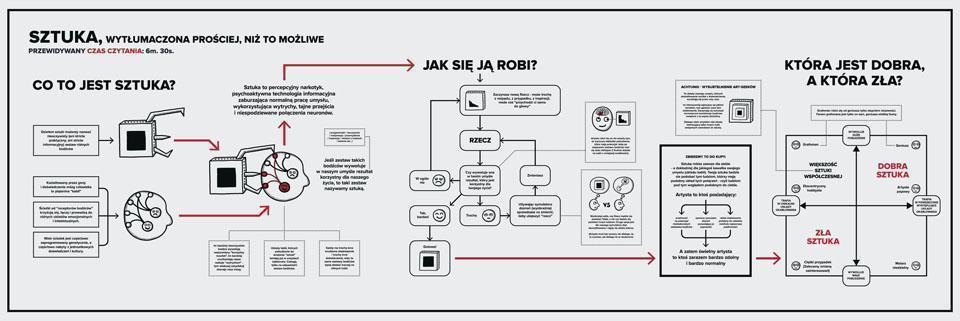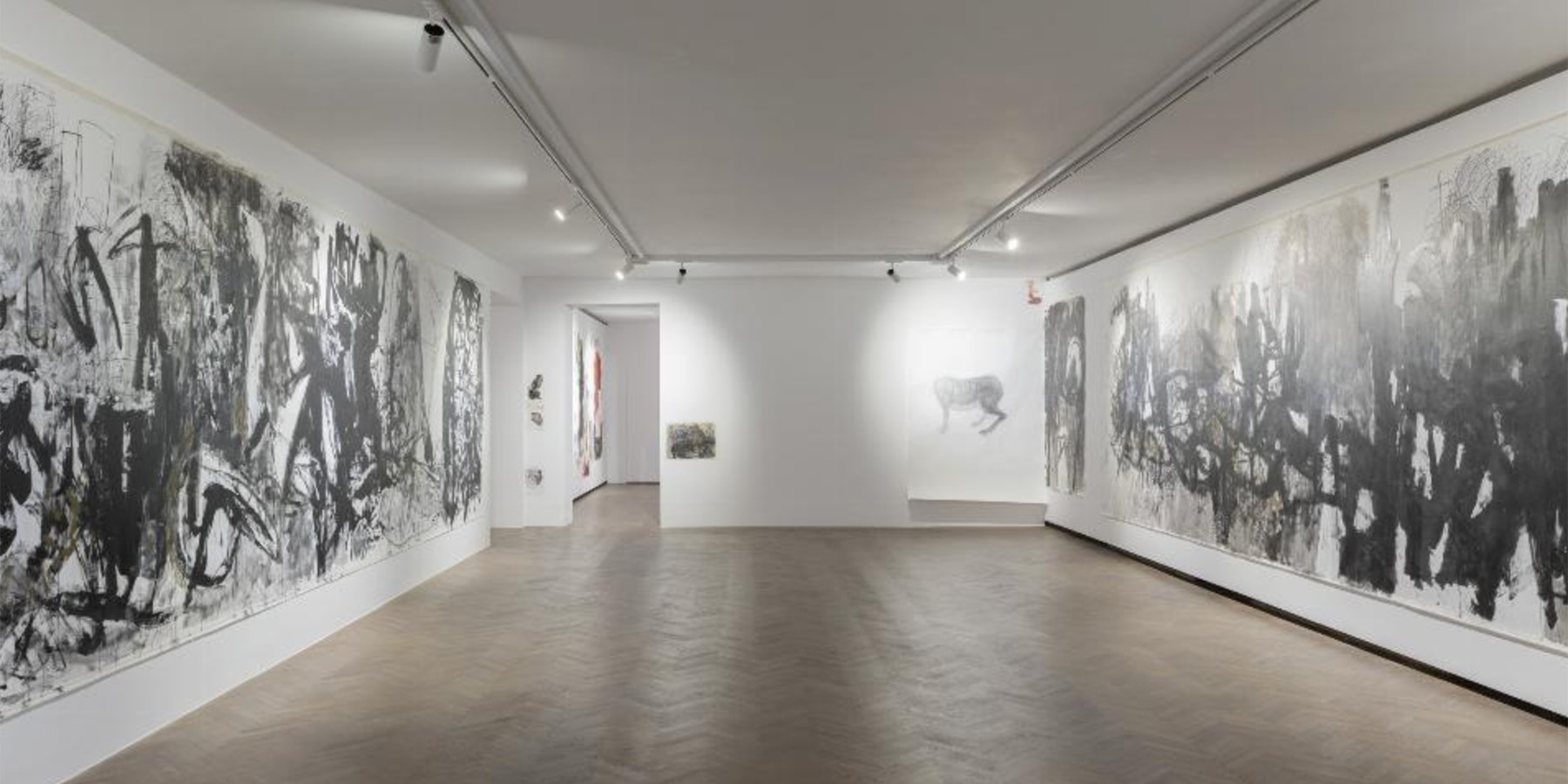Tymek Borowski
Art Explained Simpler than Possible
Tymek BorowskiArt Explained Simpler than Possible, 2013/15infographics (a mural, a PDF file, a digital printout), variable sizes
Collection II of the Arsenal Gallery in Białystok. Work donated to the Arsenal Gallery by the artist in 2016

“I have always felt that I wanted to understand how the world works”. Tymek Borowski’s declaration explains the genesis of not only the work Art Explained Simpler than Possible, but also other statements, such as the films How Culture Works or How Art Works Borowski comments on his turn towards the search for order and logical rules governing social life in the context of broader changes taking place in art, including the artists’ increasing adoption of the perspective of exact sciences resulting from the need to put reality in order.
Borowski gave his work the form of an infographics resembling a diagram from a biology or physics textbook. Following the arrows and reading the short messages means observing how the artist structures his thoughts, how he arranges sections of a course of argumentation into a cause-and-effect sequences. Step by step, Borowski answers questions about who an artist is, what art is, how it is produced and what makes it “good” or “bad”; he also smuggles in his reflections on the recipient of art. Borowski estimated the time spent perusing the graphic at 6 min 30 s. On the one hand, this is a humorous reference to the practice of web portals giving an estimate of the time needed to read an article. On the other hand, it is a comment on the texts accompanying the works in exhibitions, which sometimes are lengthy, hermetic and intended to be interpretive. Borowski, convinced that “the works should explain themselves”, enquires about the condition of an artist and a recipient of art, as well as the nature of a work of art as such.
The following definition of art can be extracted from the graphics: “A work of art is a set of various non-obvious stimuli (neither strictly practical nor strictly informational). If a set of such stimuli produces in our minds a result that is beneficial to our life (pleasure / emotion / motivation / reflection / inspiration / knowledge of people and the world, etc.), we call such a set ‘art’. Art is a perceptual narcotic, a psychoactive technology that disrupts the normal workings of the mind, making use of skeleton keys, secret passages and unexpected neuronal connections”. This simple and brief explication encapsulates the fundamental questions of aesthetics and art theory: those pertaining to the essence of art, the relationship between fine and applied arts, and finally the recipient and the aesthetic experience. In doing so, it convincingly frees art from excessive pathos.
Izabela Kopania
translated from Polish by Klaudyna Michałowicz

PLAN YOUR VISIT
Opening times:
Thuesday – Sunday
10:00-18:00
Last admission
to exhibition is at:
17.30